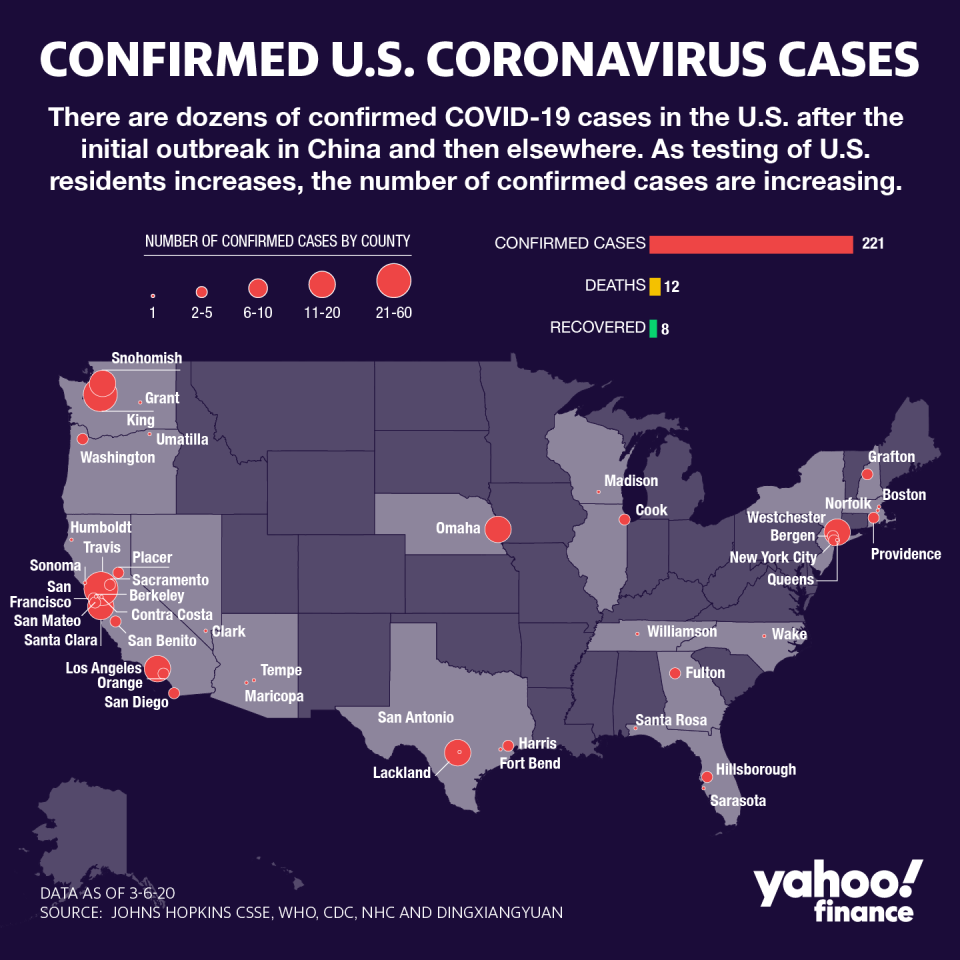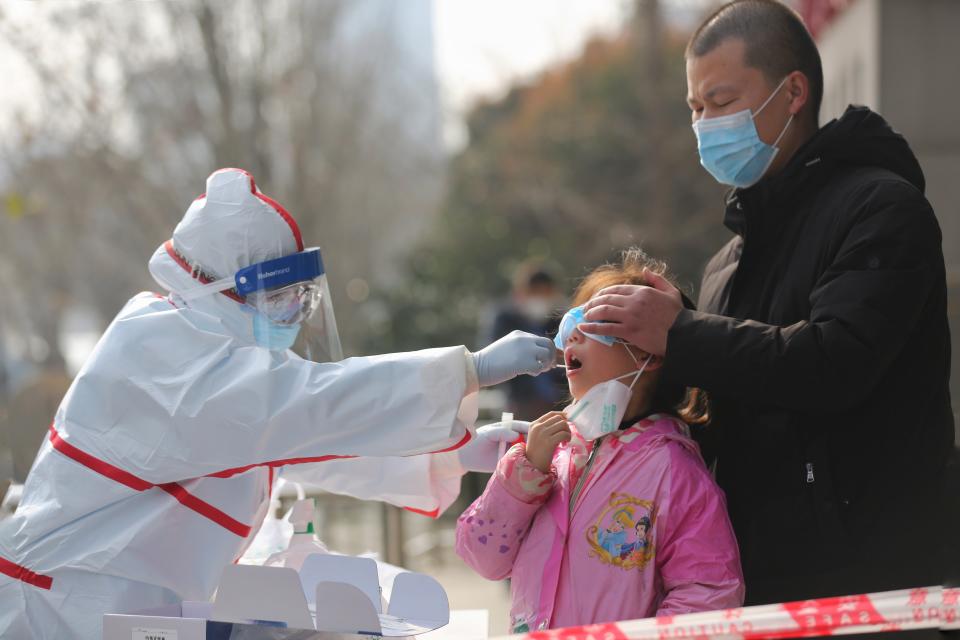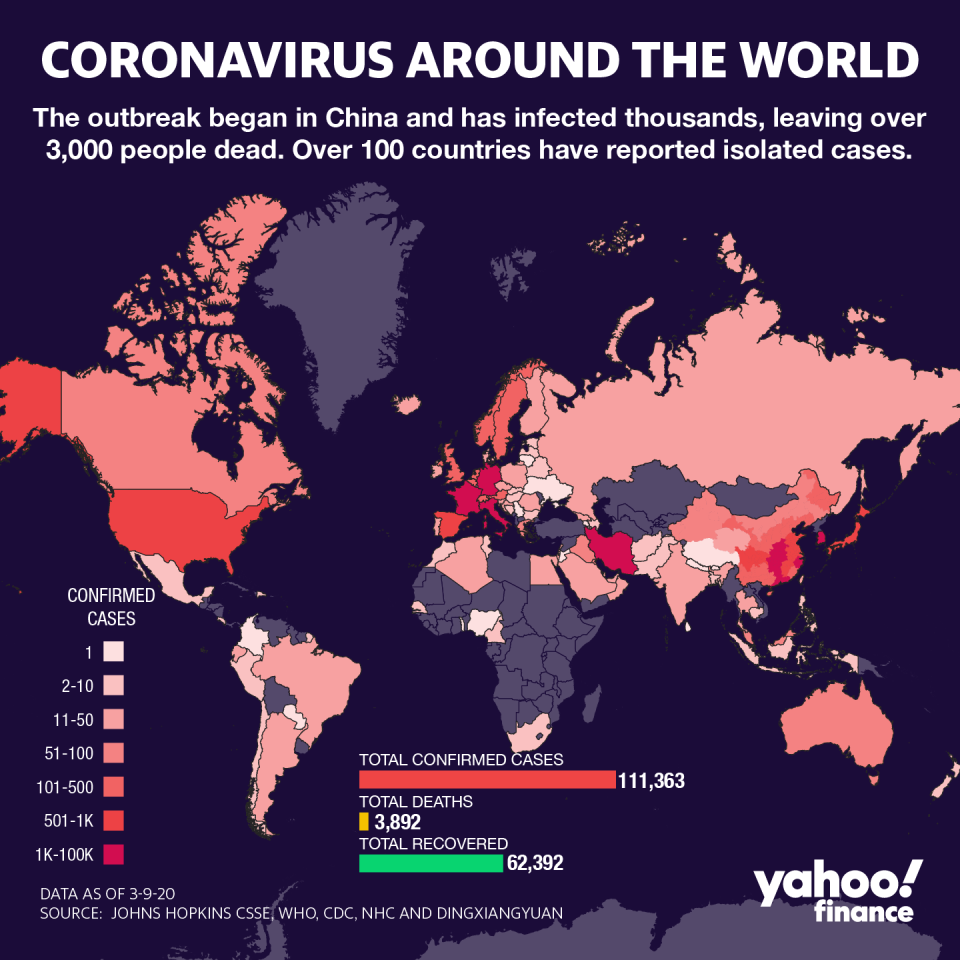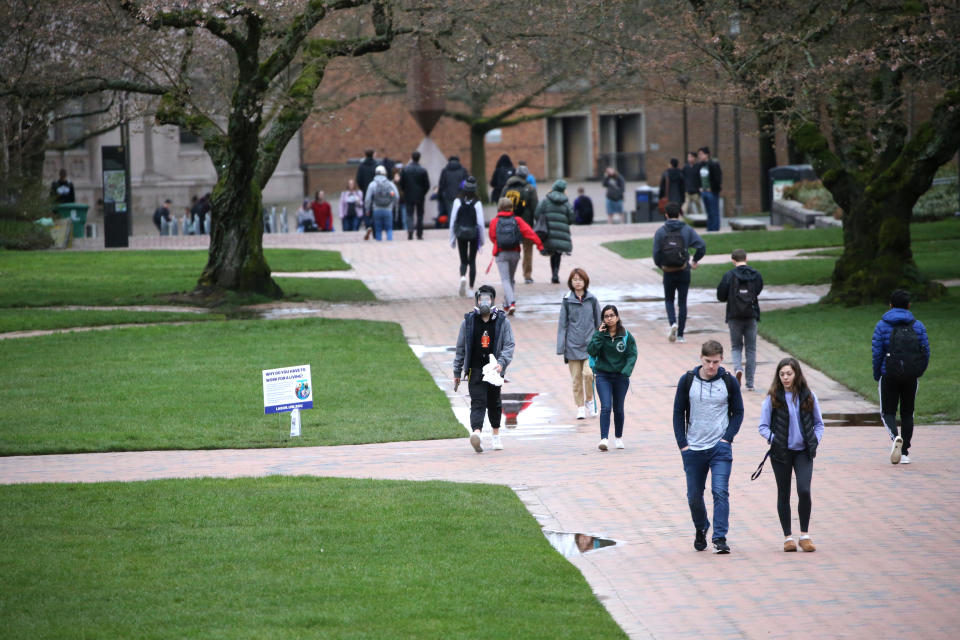Coronavirus: Experts explain what it is and how it's different
The world is under siege by a virus – SARS-CoV-2 – that has proven difficult to contain.
As of March 10, COVID-19 – otherwise known by most as the Coronavirus – has infected more than 115,000 people worldwide and taken the lives of more than 4,000 people since its first official origin back in December of 2019.
Unlike other viruses that are also currently plaguing different countries around the world, what has gotten people panicked about the Coronavirus is its rapid pace in infecting new victims.
“A best case scenario is a few hundred dead in the United States,” said Professor Dean Jamison – Professor Emeritus at University of California at San Francisco.

Strains of Coronavirus
Experts traced the source the outbreak to live animals sold from the Huanan Seafood Market, in the capital city of Wuhan in the Hubei province of China, though some experts say the market may not be its only birthplace. The virus is particularly dangerous to older-aged victims.
“What worries me about this virus is that, one, there's still an enormous number of unknowns about the virus,” said Dennis Carroll, President of the Global Virome Project. “We're still uncertain as to just how virulent or deadly it is.”

Nita Madhav, CEO of biotech company Metabiota, noted that “given what we currently know about the virus, especially with new information, we're finding out that people are maybe able to spread it even before they show symptoms. This indicates that it's likely to be much harder to control than had been initially expected. I think the number of cases is going to continue to grow.”
COVID-19 is not the first strain of coronavirus the world has faced in the 21st century. Back in 2003, the residents in the Guangdong province of Southern China fell ill from SARS – a strain of coronavirus believed to have been transmitted through infected bats and civets. The epidemic spread through 26 countries and infected over 8,000 people, of which about 800 died.
Similar to COVID-19, SARS transmitted between person through coughing, sneezing, people contaminating their hands and then putting their hands to their mouth or to their eyes. Many blamed China for its slow response time after attempting to hide the contamination from the world.

MERS – another member of the larger coronavirus family – emerged in 2012 in Saudi Arabia and went on to rack up 2,494 confirmed cases and 858 deaths. Coronavirus seems to be more contagious but less lethal on a per-infection basis. Experts believe MERS can be traced back to people touching infected camels as well as drinking its milk and eating camel meat.
But two key differences should be stressed when illustrating these different coronavirus strains.
First, COVID-19 is spreading much quicker than its predecessors. SARS – which has not been reported in the world as of 2004 – collected 8,098 cases while MERS tallied up to 2,498 confirmed cases as of November 30, 2019.
Second, COVID-19 has thus far not been as deadly as SARS or MERS, killing roughly 3.4% of its confirmed cases. A confirmed case of SARS meant 10% chance of dying. MERS has killed 34% of its confirmed cases.

Protecting those most in danger
“We should not be surprised,” said Ben Oppenheim, senior scientist at Metabiota. “The timing is always a surprise. The exact location might be a surprise, but we know that Asia is a high risk area for this type of virus to emerge.”
Following stories of botched tests and the low number of tests being performed in the U.S., an accurate number of Americans infected with COVID-19 is unknown.
“The incentive structure for a large fraction of the population is really one that for economic reasons, for them, the incentives to do the right thing in some more abstract sense are just not there,” said Jamison, who believes the appropriate actions the U.S. could take would be to assure public sector finance of any trip to the doctor’s office or the hospital, create repayment for childcare expenses that might be needed if schools close, assure some degree of paid leave, and to provide a clear, calm channel of information.

“Those are pretty expensive measures,” continued Jamison. “But the point would be to create an environment of much greater security for the population, again, particularly for the population that's most vulnerable.”
On March 6, President Donald Trump signed into effect an $8.3 billion emergency coronavirus package, which was followed by a proposal for a stimulus package that would attempt to provide relief to people directly affected financially by the pandemic.
Ignazio is a producer at Yahoo Finance.
READ & WATCH MORE:
Coronavirus Update: More than 100K infected globally as rising cases rattle investors, officials
'A victim of their own success': How vaccines became a casualty of misinformation in the U.S.
Follow Yahoo Finance on Twitter, Facebook, Instagram, Flipboard, SmartNews, LinkedIn, YouTube, and reddit.

